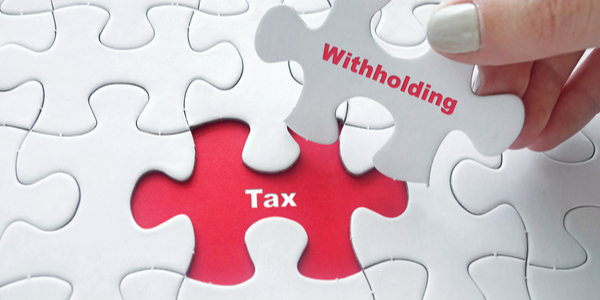When it comes to taxes, mistakes can cost you more than money. That’s especially true with Federal backup withholding taxes.
In simplest terms, 24 percent backup withholding is demanded of both payers and payees who either mistakenly or intentionally supply incorrect or incomplete information about 1099 or W2-G income.
The IRS requires both businesses and individual taxpayers to know when they are required to start backup withholding; what kinds of income are subject to it; and when it’s okay to stop paying.
Small mistakes can cost big tax penalties
Sometimes, a freelancer failing to check theW-9 box certifying that he/she is not subject to Backup Withholding can generate this tax. So can underreported or misreported interest or dividend income on a federal tax return.
IRS Tax Tip 2021-85 released on June 15, 2021, explains (in typically complex language) the concept of backup withholding. Since independent contractors typically handle their own taxes, businesses don’t generally withhold taxes from their payments.
If you are a business that paid a freelancer more than $600 in the last year, you are required to fill out a 1099-MISC form. If there is a problem with the TIN or Social Security Number (SSN) on the W9 that the consultant provided, you must begin backup withholding. The current rate that must be withheld from their pay is 24 percent – at least until the issue is sorted out. There are some other situations where you must begin backup withholding, but this is the most straightforward example.
What payments are subject to backup withholding?
- Interest payments (Form 1099-INT)
- Dividends (Form 1099-DIV)
- Payment Card and Third-Party Network Transactions (Form 1099-K)
- Patronage dividends, but only if at least half the payment is in money (Form 1099-PATR)
- Rents, profits, or other gains (Form 1099-MISC)
- Commissions, fees, or other payments for work you do as an independent contractor (Form 1099-MISC)
- Payments by brokers/barter exchanges (Form 1099-B)
- Payments by fishing boat operators, but only the part that is in money and that represents a share of the proceeds of the catch (Form 1099-MISC)
- Royalty payments (Form 1099-MISC)
- Gambling winnings (Form W-2G) may also be subject to backup withholding.
- Original issue discount reportable on (Form 1099-OID), Original Issue Discount, if the payment is in cash
- Certain Government Payments, Form 1099-G
What payments are “excluded” from backup withholding?
- Real estate transactions
- Foreclosures and abandonments
- Cancelled debts
- Distributions from Archer MSAs
- Long term care benefits
- Distributions from any retirement account
- Distributions from an employee stock ownership plan
- Fish purchased for cash
- Unemployment compensation
- State or local income tax refunds
- Qualified tuition program earnings
How can you stop backup withholding?
Taxpayers need to correct the reason why they became subject to backup withholding. This can include providing the correct TIN to the Payer, resolving the underreported income, and paying the amount owed, or filing the missing tax return(s). Luckily, you will have 120 days to correct the errors.
There are civil and criminal penalties for giving false information to avoid backup withholding. The civil penalty is $500. The criminal penalty, upon conviction, is a fine of up to $1,000 or imprisonment of up to one year, or both.
Best to work with a Qualified Tax Advisor
The good news is that backup withholding can sometimes be credited. If you’ve had income tax withheld under the 24 percent backup withholding rule, you need to report the federal income tax withholding (shown on Form 1099 or W-2G) on the return for the year the income was received in order to get credit for the backup withholding.
Who is your Qualified Tax Advisor? ©


